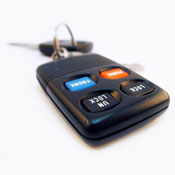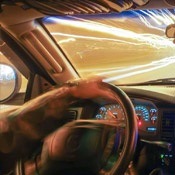Toyota Pickup Insurance in Nevada – 6 Discounts Drivers are Forgetting

Nevada drivers have options when trying to find the lowest priced Toyota Pickup insurance. They can either waste time driving around trying to get quotes or leverage the internet to compare rates.
There are both good and bad ways to find auto insurance online and you need to know the absolute fastest way to get price quotes on a Toyota and get the best price possible either online or from Nevada insurance agents.
The purpose of this article is to introduce you to how to effectively get price quotes and some tricks to saving. If you have car insurance now, you will most likely be able to lower your premiums substantially using these tips. Nevertheless, Nevada consumers must know the methods companies use to sell insurance online because it can help you find the best coverage.
Free Quotes for Auto Insurance in Nevada
Most major insurance companies quote coverage price quotes online. Obtaining pricing doesn’t take much effort as you simply type in your coverage information as requested by the quote form. Behind the scenes, their rating system pulls your driving record and credit report and gives you a price quote based on these and other factors.
Quoting online makes it a lot easier to compare rates but the process of having to visit multiple sites and type in the same information can be a bit repetitive. Unfortunately, it is important to have as many quotes as possible in order to find a better rate.
A quicker way to compare auto insurance pricing is to use a quote form to return rates from a bunch of companies at once. The form is fast, eliminates repetitive work, and makes online price comparison much easier. After sending your information, it is quoted and you can select any of the price quotes you receive.
If one or more price quotes are lower than your current rates, you can simply submit the application and buy the new coverage. The whole process only takes a few minutes and may result in a nice savings.
If you want to compare pricing, click here and enter your vehicle and coverage information. To compare your current rates, we recommend you duplicate the coverages as shown on your current policy. This helps ensure you will receive rate quotes using the same coverage and limits.
Don’t miss out on these six money-saving discounts
Insuring your vehicles can cost a lot, buy you may qualify for discounts to help offset the cost. Certain discounts will be applied when you complete an application, but a few need to be asked for prior to getting the savings.
- Driver Safety – Taking part in a defensive driving course can save you 5% or more depending on where you live.
- Lower Rates for Military – Having a family member in the military can result in better rates.
- Good Students Pay Less – Getting good grades can save 20 to 25%. This discount can apply up to age 25.
- Auto/Home Discount – When you have multiple policies with the same insurance company you may earn up to 20% off your total premium.
- Early Signing – Some insurance companies reward drivers for signing up before your current expiration date. This can save 10% or more.
- Drive Safe and Save – Safe drivers can get discounts for up to 45% lower rates on pickup insurance than less cautious drivers.
As a disclaimer on discounts, some credits don’t apply to all coverage premiums. Most only cut the price of certain insurance coverages like collision or personal injury protection. Even though it may seem like all the discounts add up to a free policy, you won’t be that lucky. But all discounts will reduce your overall premium however.
For a list of providers who offer auto insurance discounts in Nevada, click here to view.
Neighborhood insurance agents
Certain consumers prefer to talk to a local agent. The biggest benefit of price shopping on the web is you may find the best rates and still have an agent to talk to. Supporting local businesses is important particularly in smaller communities.
After completing this quick form, your insurance coverage information is immediately sent to local insurance agents who will compete for your coverage. You don’t have to drive around since price quotes are sent directly to your email. Now that’s easy! You’ll get the best rates and a licensed agent to work with.
To select a specific agent in Nevada, click here.
Deciding on an insurer needs to be determined by more than just the price. Any agent should have no problem answering these questions:
- Do they feel the quoted coverages are adequate?
- Are they able to influence company decisions when a claim is filed?
- What insurance companies do they work with?
- Do they review policy coverages at every renewal?
- Who are their largest clients?
Upon receiving reasonable responses and an acceptable price quote, you have narrowed it down to an provider that is a good match to insure your vehicles.
Information about specific coverages
Knowing the specifics of your policy can be of help when determining the right coverages for your vehicles. Policy terminology can be difficult to understand and even agents have difficulty translating policy wording.
Liability coverages – This can cover damages or injuries you inflict on other people or property. This insurance protects YOU from claims by other people. It does not cover damage sustained by your vehicle in an accident.
Liability coverage has three limits: per person bodily injury, per accident bodily injury, and a property damage limit. As an example, you may have liability limits of 25/50/25 which means $25,000 bodily injury coverage, a per accident bodily injury limit of $50,000, and a total limit of $25,000 for damage to vehicles and property. Another option is a combined limit which limits claims to one amount rather than limiting it on a per person basis.
Liability insurance covers things such as bail bonds, medical expenses, funeral expenses, structural damage and repair bills for other people’s vehicles. How much coverage you buy is up to you, but it’s cheap coverage so purchase as much as you can afford. Nevada requires drivers to carry at least 15,000/30,000/10,000 but you should think about purchasing higher limits.
Comprehensive coverage (or Other than Collision) – Comprehensive insurance coverage pays for damage caused by mother nature, theft, vandalism and other events. A deductible will apply and then insurance will cover the rest of the damage.
Comprehensive insurance covers things like damage from getting keyed, fire damage, rock chips in glass and damage from flooding. The highest amount you’ll receive from a claim is the actual cash value, so if it’s not worth much more than your deductible consider dropping full coverage.
Collision – Collision coverage pays to fix your vehicle from damage resulting from colliding with a stationary object or other vehicle. You first must pay a deductible and the rest of the damage will be paid by collision coverage.
Collision coverage protects against things such as backing into a parked car, crashing into a ditch, hitting a mailbox, sideswiping another vehicle and damaging your car on a curb. This coverage can be expensive, so consider removing coverage from lower value vehicles. Drivers also have the option to choose a higher deductible to save money on collision insurance.
Insurance for medical payments – Med pay and PIP coverage reimburse you for immediate expenses such as prosthetic devices, pain medications and ambulance fees. The coverages can be used to fill the gap from your health insurance plan or if you are not covered by health insurance. It covers not only the driver but also the vehicle occupants as well as if you are hit as a while walking down the street. Personal injury protection coverage is not universally available but can be used in place of medical payments coverage
Uninsured Motorist or Underinsured Motorist insurance – This coverage protects you and your vehicle from other drivers when they either are underinsured or have no liability coverage at all. This coverage pays for injuries sustained by your vehicle’s occupants as well as your vehicle’s damage.
Since many Nevada drivers have only the minimum liability required by law (Nevada limits are 15/30/10), it doesn’t take a major accident to exceed their coverage limits. For this reason, having high UM/UIM coverages is a good idea. Normally your uninsured/underinsured motorist coverages are identical to your policy’s liability coverage.
More information can be found on the Nevada Division of Insurance website. Click here for link. Consumers can find out industry alerts, find a variety of consumer forms, and discover disciplinary actions.
The following articles may also be useful.
- Insider Advice on Lower Sparks Nevada Auto Insurance
- Use Online Quotes to Find a Car Insurance Agent in Henderson Nevada
In the end, you save
Low-cost Toyota Pickup insurance is attainable from both online companies and with local Nevada insurance agents, and you need to comparison shop both in order to have the best price selection to choose from. Some auto insurance companies do not offer online price quotes and most of the time these regional insurance providers sell through independent agents.
You just read a lot of ways to lower your Toyota Pickup insurance rates. The key concept to understand is the more rate comparisons you have, the better your comparison will be. You may even find the biggest savings come from a small mutual company.
Consumers who switch companies do it for many reasons like denial of a claim, delays in responding to claim requests, unfair underwriting practices and not issuing a premium refund. Regardless of your reason for switching companies, switching companies can be pretty painless.

